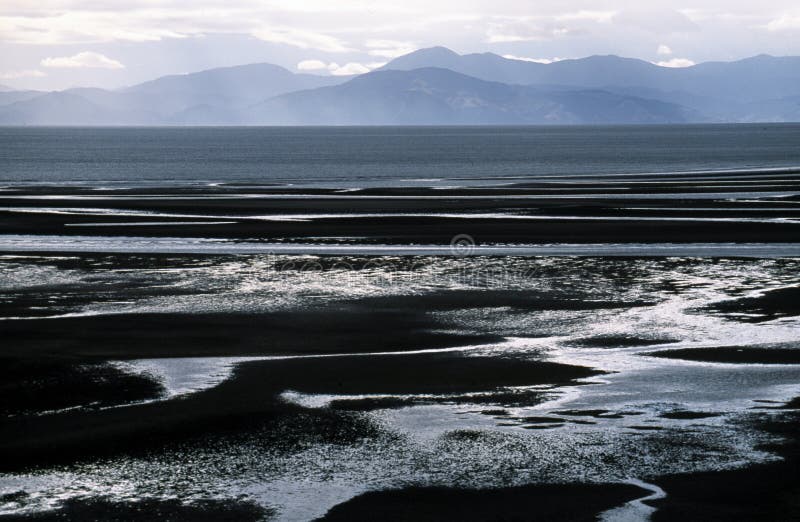
When working with scenes of different acquisition dates we need comparable values for each pixel. The atmospheric correction is very important, because scattering and absorption processes in the atmosphere modify the spectral signature. 4) and separation of the tidal flat areas from other surface types such as water and meadows (Fig. White pixels represent tidal flat pixels.Īt the beginning, some general pre-processing steps are necessary, like atmospheric correction (Fig.
Tidal flats software#
The calculation and analysis where done with the image processing software ENVI 4.3 from ITT. For a more detailed analysis of the different surface types, and, in particular, of the sediment properties, additional data like spectral reflectance measurements on ground and in-situ samples are necessary.įigure 5 Tidal flat extraction The following three figures show the input/result of the tidal flat extraction: a) input, b) supervised classification result (Maximum-Likelihood, with band 3,4,5) and c) the mask image derived from the classification. If the focus is on vegetation (seagrass, macroalgae) common vegetation indices can be used. If the analyst is interested in the documentation of morphological changes of the tidal flat, simple classification methods can be used for analysing multitemporal data sets. The use of different methods and techniques depends on the information the user is interested in. The ASTER sensor is part of NASA’s Terra spacecraft, which was launched in December 1999 (Table 2). Presently, the data from Landsat 5 (launched in March 1984) and Landsat 7 (launched in April 1999) are used for worldwide data analysis (Table 1). Current and historical data are very useful for research in the field of change detection and monitoring. The Landsat Programme is the longest running mission for the collection of multispectral digital data of the earth's surface from space. The first multispectral satellites for land remote sensing, the Landsat series, were launched during the 1970s and have delivered data up to the present. In the SWIR range it has very fine bands, specially defined for the analysis of soil and rocks. Instead, it has two bands in the NIR range (3N - Nadir and 3B backward) for stereoscopic observations. Table 2 Compared to Landsat the ASTER sensor has a better spatial resolution in the visible range but no band in the blue spectral range. They support the identification of proxi-parameters and indicators and fill the temporal gap between in-situ data and field measurements. Remote sensing data support mapping and monitoring programmes. The whole German Wadden Sea can be detected under the same environmental conditions with only two scenes of the Landsat satellite, which has been an operational satellite system since 1972. Due to the expanse of the tidal flat of nearly 10,000 km2, the variability of water cover and the variability of the sediment, remote sensing has become an indispensable technique. This means that they are time- dependent and time-consuming. Traditional monitoring techniques of larger areas are limited by the factor time.

They form a transitional zone between land and ocean. They play an important role as a cleansing site for North Sea water, as a nursery for young fish and as a feeding ground for many bird species. Tidal flats are unique ecosystems because of the water cover, which changes permanently with the tidal phase.


Both are useful for monitoring conditions in near real time as well as detecting changes of the environment when analysing historical data.

Remote sensing has many advantages such as large coverage and the recording of multi-temporal data. The objective of our research was to classify the different surface types of the tidal flat areas with satellite data in combination with ground truth measurements. 6 Vegetation analysis & sediment classification.5.4 PCA and unsupervised classification.


 0 kommentar(er)
0 kommentar(er)
